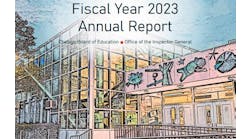Students need to know how to apply their knowledge and skills: thinking critically, using knowledge in new situations, analyzing information, comprehending new ideas, communicating, collaborating, solving problems and making decisions. The question: Are today’s technology tools helping them achieve this?
Just how important is technology to students? We know that it is important enough to high school students to strongly influence what college they select. What students seem to value are wireless networks, off-site connections, course-management systems, online learning opportunities in the classroom and social media. Today, students use Facebook, Twitter and wikis as means of connecting with other students, studying and working on projects.
So what’s the problem? All indications point to the non-tech-savvy faculty members.
Technology tools alone do not change a model if it is broken; they just make that model more expensive. School districts have spent a lot of money on technology tools just because these tools are tangible and can be counted. Often, these tools aren’t used at all or are used improperly in teaching.
In many cases, teachers still control the content, stand in front of the class and try to manage a lesson plan, but this doesn’t give students an adaptive learning environment. This type of instruction doesn’t differentiate instruction, enable social feedback, reduce teacher workload or engage students.
There is emerging evidence that money spent on technology tools isn’t necessarily enhancing teaching and learning, just delivering it differently. But, you might say, doesn’t the literature indicate that learning increases with the use of technology tools? Much of the research we read in magazines or on the Internet is industry-backed studies linking improved test scores to their products. However, don’t beat up on industry; it is only doing what a capitalist society tells it to do. The truth: there is hardly any accepted research that will show any of the existing technology tools will improve academic achievement.
In many cases, how we teach students doesn’t reflect the society we live in today:
•Most jobs today entail working with others, yet most of our efforts to teach have students working alone.
•The Internet has made access to factual information extremely easy, yet our learning activities too often emphasize rote memorization of facts instead of understanding and practical application.
Educators need to acknowledge that technology isn’t automatically going to improve the quality of instruction. The fundamental determinants of instructional quality have always been, and remain, the course content, the teacher(s), the learning activities in which the students are engaged and the students themselves. If you want to reform pedagogy, make the changes first and bring technology in where it makes sense to support the change. Don’t hope that technology will do it for you—it is not a Trojan horse for smuggling in improved teaching and learning practices.
Classrooms now have large amounts of hardware and software. It is up to teachers to decide how to use it. If they choose to use it for higher-order thinking, the public can expect great things from technology; otherwise, it may turn out to have been a wasted investment.
For technology to improve student learning, it has to involve students, not just teachers. Only when students have the love of learning and know how to use technology effectively will true change and improvement happen. Students have more mastery of technology than most educators do. Schools must realize this and learn how to tap this potential.
C. William Day is senior analyst at KBD Planning Group, Young Harris, Ga., a firm specialized in education facilities and technology planning. He can be reached at [email protected].

